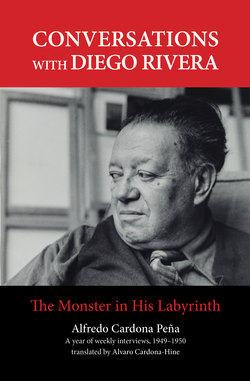Conversations with Diego Rivera

Реклама. ООО «ЛитРес», ИНН: 7719571260.
Оглавление
Alfredo Cardona Peña. Conversations with Diego Rivera
Отрывок из книги
ENDORSEMENTS
Three months after I arrived from Guatemala to study in La Esmeralda, with a scholarship from the democratic government, I was asked to work as an assistant on Diego Rivera’s mural Dream of a Sunday Afternoon in Alameda Central Park. Diego was starting the mural in the Hotel del Prado where the famous phrase “God does not exist” scandalized Mexico.
.....
When it comes to technical matters, we shall refer only to his experiments and research into wax painting, better known as encaustic painting, whose most notable exponent was Delacroix (Lateral chapels of the Church of Saint Sulpice in Paris).
Rivera himself, following the exposition, discussed his own research into encaustic and al fresco techniques with the Mexican painter Juan O’Gorman. Here is the crux of the matter, revealing of the scientific and humanistic fervor of the artist: “I began to get interested,” he told his friend, “with wax and resin color around 1905, above all with the idea of substituting it for oil color, as Raphael did. In those days that was the novelty and excitement among painters working with the neo-impressionist tendencies, like the great Seurat and the Swiss-Italian Segantini. Nobody had found the procedure to cauterize and arrive at the proper encaustic means. So I resolved to go to the sources, which were Greek, Coptic, Egyptian and Roman, but these kept the secret of such painting a mystery. And so it was. There was nothing else to do but take recourse in Pliny’s writings on natural history. There is one chapter where he talks of painting methods. Montavert, Delacroix and others had consulted Pliny without success so I, with the audacity of one who knows nothing and lacks respect for classic authors, thought it might be a question of how to interpret the Latin text, and went to look for it at the National Library in Paris. Montavert said that Pliny mentioned encaustic as ‘an oil of pine and stone.’ Of course, nobody understood what that was all about. When I came upon that specific passage in Pliny I could hardly believe what I was reading. The key word was petroleum. Petroleum in Pliny’s time could only be obtained through exudation or in natural springs. What Pliny meant was really ‘hide,’ which Montavert had translated as ‘pine.’
.....